Angela Ackerman's Blog: Writers Helping Writers, page 58
November 15, 2021
Best Black Friday Deals for Writers

This year we’re starting Black Friday early because let’s face it, it’s been almost two years of ROUGH SAILING, and writers deserve a break.
We’ve scoured the writerly landscape and rustled up a list of the best deals out there.
Dates are listed for each deal. Unless otherwise stated, they go until November 30th, 2021 EST.
Get ready to save in 3… 2… 1(FYI, there’s an affiliate link or two below. They help keep the lights on around here.)
 40% off a 6-Month Subscription to One Stop for Writers
40% off a 6-Month Subscription to One Stop for Writers
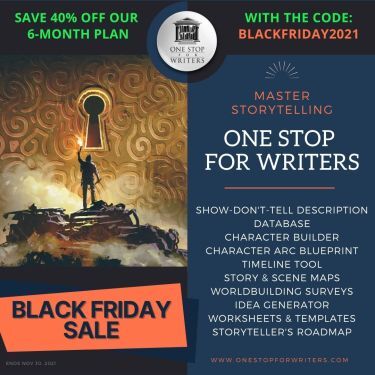
One Stop for Writers is a storytelling portal with one mission: to help you write stronger fiction faster.
Becca and I have designed cutting-edge tools and resources to give writers exactly what they need to create fresh, amazing stories.
Power up your writing toolkit with…The largest Show-Don’t-Tell Database available (psst – check it out) A Character Builder that helps you create fully-developed characters while identifying keystone details and places them in an accurate Character Arc Blueprint for youStory Map & Scene Map tools to make plotting easierA drag-and-reorder Timeline ToolCustom Worldbuilding SurveysAn Idea Generator for plot twists, stakes, character secrets & moreWorksheets, Templates, Tip Sheets & moreA Storyteller’s Roadmap that gives expert, step-by-step guidance from that first idea to a polished, publish-ready novelAnd more!There’s no easy button for writing. But the next best thing? One Stop for Writers!Use the one-time code BLACKFRIDAY2021 when you subscribe to the 6-Month plan to save 40%. Already subscribed to the 6-month plan? Just add the code on the My Subscription page and the discount will apply to your next invoice.
Writing can be easier!
40% off a 1-Year Subscription to Fictionary StoryTeller
Fictionary StoryTeller is a creative editing software for fiction writers and editors that makes editing easier by applying universal storytelling structures to each and every scene. Evaluate and revise your manuscript against 38 Fictionary Story Elements to tell a powerful story that readers will naturally connect with.
After you’ve written your draft, it’s time to revise your story, and Fictionary will guide you through your edit. Turn your words into a great story.
Use the code BLACKFRIDAY21 for 40% off. (DEAL ON NOW)
25% off 1-Year or 50% off a Lifetime License for ProWritingAid PremiumProWritingAid gives you clear, easy steps to improve your writing so you can share your ideas with confidence.
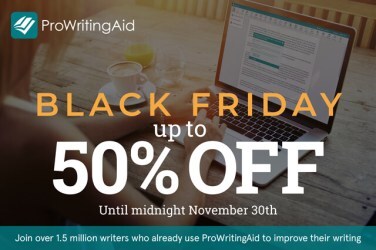
What sets ProWritingAid apart from other writing software is that it offers world-class grammar and style checking combined with more in-depth reports to help you strengthen your writing. Their unique combination of suggestions, articles, videos, and quizzes makes writing fun and interactive. The more you use ProWritingAid, the more you will learn.
You will become a better writer with ProWritingaid.
No code needed. (DEAL ON NOW)
$50 off a Social Ad For Authors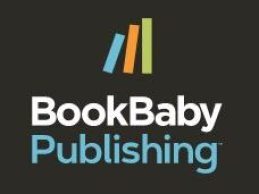
Save $50 on a custom-built ad campaign that reaches your readers on the world���s most popular place to hang out.
Your social ads will include an attention-grabbing image, an enticing synopsis, and a direct link that takes readers straight to your sales page on BookShop, Amazon, or wherever your book is available. Make this holiday season a profitable one and start your ad campaign today.
Snag your $50 off a Social Ad For Authors with the code FACEBOOK50. (DEAL ON NOW)
Free Keywords and Category Course (Normally $50) with Publisher Rocket Purchase
Publisher Rocket is book marketing software that helps authors with finding profitable keywords and categories and even helps them build Amazon books ads effectively and efficiently. The course that comes with this deal, which is normally $50, will show you each step of the way and give you inside information on how to best select your keywords and categories.
(DEAL STARTS NOVEMBER 24TH AND ENDS NOVEMBER 30TH)
21% Off Professional Editing Services (Certified Structural Editing, Book Coaching, and More)
FirstEditing’s professional editors manually correct and perfect your every word so you can publish confidently and successfully. Over 50,000 authors since 1994 have entrusted FirstEditing with their manuscripts. Get an expert editor in your genre to personally edit your writing, revise your syntax, and advise you how to structurally strengthen your English presentation.
Get a free editing sample of your writing so you can try before you buy.
Use the code BLACK21 to save 21% at FirstEditing. (DEAL ON NOW)
Free WIP Summit Conference Ticket
Join Women in Publishing Virtually March 2-5, 2022 The biggest virtual event for women in the publishing industry. Authors, editors, publishers, marketers ��� we cover everything from why to write a book to the hows, to the launch, and the business of being an author.
Culminating on International Women���s Day, we celebrate, empower, encourage, and support women writers and professionals in the publishing industry.
No code needed. (DEAL ON NOW)
30% off Select Courses with Writing Coach Sacha Black
Do you want to improve your prose, characters or storytelling? Join rebel author, podcaster, and bestselling author Sacha Black for her writing classes:
The Anatomy of Prose: The Senses
Villains Masterclass
This 30% off is valid until December 2nd with the code: BLACKFRIDAY30. (DEAL STARTS NOV 25TH & ENDS DEC 2ND)
25% off Outlining Your Novel Workbook Software
Helping Writers to Become Authors has produced the Outlining Your Novel Workbook computer program, a brainstorming tool for writers. It’s designed to guide you in discovering the brilliant possibilities in your ideas, so you can identify those best suited to creating a solid story that will entertain and move your readers.
Save 25% with the code OUTLINE. (DEAL ON NOVEMBER 26-29TH)
5O% off the Conquer Writer’s Block Online Course
This course that will help you become a prolific writer. This online course will give you the skills you need to turn up in front of the blank page full of ideas and with a clear plan about which one to focus on. The self-paced course will help you build a personal writing system that works so you can find the success you deserve today.
Save 50% with the code BLACKFRIDAY11. (DEAL ON NOW)
20% ($70) off the January Five-Week Small Group Coaching Cohort
Are you craving accountability and feedback on your work? Do you want to write but don’t know where to start? Do you want a team that supports and encourages you? Introducing The Writing Cooperative Community Cohort! Our small-group-based, five-week coaching program combines accountability, support, and encouragement to help you write better and achieve your goals.
Grab this 20% off deal with the code BLACKFRIDAY. (DEAL ON NOVEMBER 25-30TH)
As writers, we’re all on a budget.
Becca and I hope these deals are exactly what you need to take your writing to the next level. Happy writing…and saving!
The post Best Black Friday Deals for Writers appeared first on WRITERS HELPING WRITERS��.
November 11, 2021
Phenomenal First Pages Contest
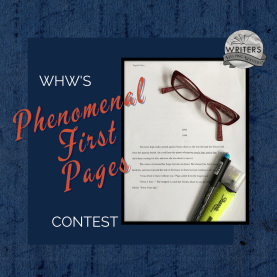 Hey, wonderful writerly people! It���s time for our monthly first-page critique contest
Hey, wonderful writerly people! It���s time for our monthly first-page critique contest 
If you���re working on a first page (in any genre except erotica) and would like some objective feedback, please leave a comment. Any comment :). As long as the email address associated with your WordPress account/comment profile is up-to-date, I���ll be able to contact you if your first page is chosen. Just please know that if I���m unable to get in touch with you through that address, you���ll have to forfeit your win.
Two caveats:
 Please be sure your first page is ready to go so I can critique it before next month���s contest rolls around. If it needs some work and you won���t be able to get it to me right away, let me ask that you plan on entering the next contest, once any necessary tweaking has been taken care of. Resources for common problems writers encounter in their opening pages can be found here.
Please be sure your first page is ready to go so I can critique it before next month���s contest rolls around. If it needs some work and you won���t be able to get it to me right away, let me ask that you plan on entering the next contest, once any necessary tweaking has been taken care of. Resources for common problems writers encounter in their opening pages can be found here.
 This contest only runs for 24 hours, start to finish, so get your comment in there!
This contest only runs for 24 hours, start to finish, so get your comment in there!
Three commenters��� names will be randomly drawn and posted tomorrow morning. If you win, you can email me your first page and I���ll offer my feedback.
We run this contest on a monthly basis, so if you���d like to be notified when the next opportunity comes around, consider subscribing to our blog (see the left-hand sidebar).
Best of luck!
PS: If you want to amp up your first page, grab our helpful��First Pages checklist from One Stop for Writers. And for more instruction on these important opening elements, see this��Mother Lode of First Page Resources.The post Phenomenal First Pages Contest appeared first on WRITERS HELPING WRITERS��.
November 9, 2021
3 Simple Tricks to Immerse Your Reader In Your Story
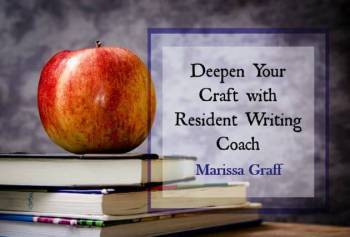
By Marissa Graff
As writers, fusing our protagonist with the reader creates the ultimate reading experience. Teacher and writer John Gardener referred to this as ���the fictional dream.��� It���s a state the reader reaches whereby they feel as though they are inside the story, inside the character���s skin, going through events themselves. Achieving this dream-like state is difficult, while undermining it is surprisingly easy to do. But there are three simple tricks you can utilize that increase the odds of drawing your reader into a literary dream from which they won���t want to wake up.
Remove Filter VerbsIf our goal as writers is to allow the reader to experience our stories as though they ARE our characters, then filter verbs are the enemy. Filter verbs (sometimes called distancing verbs) are sensory verbs like look, smell, hear, taste, feel, think. (Note: variations on these words also count, such as see, listen, notice, wonder, etc.).
They look harmless, right? But these words subtly remind the reader that the character���s eyes are doing the seeing, or their brain is doing the thinking, or their heart is doing the feeling. They subtly tell the reader, psst, this isn���t actually your story. Take a look at the following examples, paying attention to the underlined filter verbs and how they can be removed:
Example:
He smelled maple syrup and thought of the last time Dad took him to breakfast.
Instead, try:
The sweetness of maple syrup took him back to that booth at the diner, sitting across from Dad.
Example:
She peered into her boss��� empty office and wondered why he was gone so much lately.
Instead, try:
Her boss��� office was empty yet again.
See the difference? We are inside the characters��� senses in a far more bold and confident way. And yes, the latter examples are harder to write. They require intention. But we must trust the reader to understand that the filter verbs are implied and bring them into the character���s viewpoint.
Note: those examples are both in third-person POV, which is harder to imbue with immediacy and intimacy. But as you can see, it���s worth the effort. There���s room for your reader to feel as though they are in the moment, behind the character���s senses and inside their brain and heart.
Eliminate Time WordsAnother way we often gently sabotage ourselves and say, ���Hey reader, the narrator is talking to you,��� is by using time words. Yes, it���s important to orient your reader with passage-of-time phrases, particularly when there���s a gap in time to account for (the next day, later that evening, the following week, etc.). But in terms of time movement within an active scene, consider cutting words like then, next, after that, finally, and when. Time words are often implied because sentences are linearly structured. They add unnecessary clunk and they subtly send the message the narrator is telling the reader what happened and in what order. Just like the previous examples, time words are underlined below:
Example:
When they climb into the car, their face is scrunched up in anger.
Instead, try:
They climb into the car with their face scrunched up in anger.
Example:
As soon as I walk into the house, I jog upstairs and then answer my phone.
Instead, try:
I walk into the house, jog upstairs, and answer my phone.

Notice how I said minimize���not cut���internal dialogue. Novels can and should include internal dialogue. There are times where, without it, the reader would be lost. Confused. Dying to understand how a character is feeling. Or desperate to know what the character is thinking. Internal dialogue oftentimes is the window that affords the crucial meaning of how the character is making sense of what���s happening around them.
But it���s important to imagine your scenes like a coil that you are working to tighten, word by word. Each time we step away from dialogue or external action, that coil threatens to lose tension. Working with editing clients, I often see internal dialogue sending a subtle signal that says, ���Here, let me do the thinking and analyzing and feeling for you, dear reader.���
Some questions to ask as you reevaluate your own usage of internal dialogue:
*It is otherwise impossible to show what���s been told via action and/or dialogue?
*Does it let us know feelings or thoughts the character is hiding from everyone else?
*Is it brief?
That last one is crucial. The longer internal dialogue goes, the more that coil you work to tighten starts to unwind. Author Tim Wynne Jones has referred to long swaths of internal dialogue as Pause Button Violations. Within an active scene, it���s as though the author hits the pause button on all action and dialogue to allow for the internal dialogue. The pause is unnaturally long given the fact that it sits inside an active scene, and can oftentimes be done in a far shorter way or be done using dialogue and action on the page instead.
Consider combing your manuscript in search of these three fictional dream killers. Once you pull them out, you���ll have a far better chance of reeling your reader in.
 Marissa Graff
Marissa GraffResident Writing Coach
Marissa��has been a freelance editor and reader for literary agent Sarah Davies at��Greenhouse Literary Agency��for over five years. In conjunction with��Angelella Editorial, she offers developmental editing, author coaching, and more. Marissa feels if she���s done her job well, a client should probably never need her help again because she���s given them a crash-course MFA via deep editorial support and/or coaching.
Website��|��Twitter��|��Instagram��|��Facebook
The post 3 Simple Tricks to Immerse Your Reader In Your Story appeared first on WRITERS HELPING WRITERS��.
November 6, 2021
Relationship Thesaurus Entry: Friends
Successful stories are driven by authentic and interesting characters, so it���s important to craft them carefully. But characters don���t usually exist in a vacuum; throughout the course of your story, they���ll live, work, play, and fight with other cast members. Some of those relationships are positive and supportive, pushing the protagonist to positive growth and helping them achieve their goals. Other relationships do exactly the opposite, derailing your character���s confidence and self-worth or they cause friction and conflict that leads to fallout and disruption. Many relationships hover somewhere in the middle. A balanced story will require a mix of these dynamics.
The purpose of this thesaurus is to encourage you to explore the kinds of relationships that might be good for your story and figure out what each might look like. Think about what a character needs (good and bad), and build a network of connections for him or her that will challenge them, showcase their innermost qualities, and bind readers to their relationship trials and triumphs.
FRIENDS
Description:
Not best friends or acquaintances, friends fall somewhere in between. These people interact socially; they may somewhat know each another or know one another within a wider group of friends. Because of the nature of this relationship, it can give rise to themes of journeys, trust, and growth.
Relationship Dynamics
Below are a wide range of dynamics that may accompany this relationship. Use the ideas that suit your story and work best for your characters to bring about and/or resolve the necessary conflict.
Spending time together regularly, but not with the closeness of best friends
Knowing one another well enough to ask for help if needed
Getting together occasionally or within a larger group of friends
Participating only in surface-level conversation; not knowing one another intimately
A friendship that only exists online (through social media, a chat app, on a discussion board for a shared interest, etc.)
Only feeling comfortable with each other when a mutual friend is present
Only interacting when necessary���such as at work or in specific social functions
One person being more invested in the friendship than the other
Not having contact except when it is an absolute must
Challenges That Could Threaten The Status Quo
A mutual friend becoming jealous of the friendship
A new friend entering the picture and taking up more of one party’s social time
One party entering a new stage of life that doesn’t include the other person (getting married, having a child, achieving professional success, etc.)
One party changing their circle of friends
One party becoming romantically involved with the friend’s ex
An unfortunate event that results in one party requiring a lot of help (the death of a spouse, losing their home or job, etc.)
One person in a mutual group of friends throwing a party and not inviting the character
One person not agreeing with the other party’s choices (regarding parenting, dating, addictions, etc.)
One person crossing personal boundaries (in regard to communication, physical touch, etc.)
One party claiming they know the other person better than they do
Conflict between the friends’ children
One friend hearing or spreading a rumor about the other
A drastic change in one person’s religious or political ideology
The parties being pressured to take sides in a spat between mutual friends
One friend unknowingly discussing a topic that is a trigger for the other person
One party starting a business that competes with the friend’s
One person’s drama bleeding into the relationship
One party breaking trust and revealing privately shared information about the friend
Their adult children becoming romantically involved, and either party not approving of the relationship
Conflicting Desires that Can Impair the Relationship
One person wanting to spend more or less time together than the other person
One person wanting to control the other person
One person wanting to be more than friends
One person wanting to keep a secret that the other person wants to reveal
One friend wanting the other friend to lie for them
One party wanting to discuss unpleasant or difficult topics that the other would rather avoid
One friend wanting financial or career help that the other person is reluctant to offer for free
One friend wanting a deeply personal favor from the other friend
One party infiltrating an area of the other���s life (activity, hobby, church, workplace, etc.) while the other person wants that area for him or herself
One friend wanting to know more about the other person than they’re willing to share
Clashing Personality Trait Combinations
Cautious and Reckless, Adventurous and Timid, Extroverted and Introverted, Generous and Greedy, Independent and Needy, Optimistic and Pessimistic, Persuasive and Weak-Willed, Loyal and Gossipy
Negative Outcomes of Friction
One person distancing themselves from the other
Decreased trust
One person having increasingly negative thoughts about the other
A mutual friend becoming a wedge between the two
One person becoming more and more afraid of saying or doing the wrong thing
The friendship becoming imbalanced, with one person being more loyal, generous, or forgiving than the other
Negative experiences in this friendship impacting future relationships
Feeling left out or less important
Having to lie to avoid the other person
Resentment building because one person feels obligated to help the friend or nurture the relationship
One friend morally corrupting the other
Not intervening when one should because of a lack of intimacy
Fictional Scenarios That Could Turn These Characters into Allies
Discovering a shared trauma that deepens the emotional connection between them
One person helping the other with finances, child care, medical support, etc.
Finding a common bond in a hobby or interest
Going through something traumatic together
Pursuing a joint business venture
Having to protect the same secret
One friend having a skill or talent that can help the other
Coming together to help a third party
The children of the parties becoming friends
Ways This Relationship May Lead to Positive Change
Learning to let someone new into one���s life
Widening one���s social circle through mutual contacts and new activities
Expanding one���s knowledge of different backgrounds
Being exposed to new things
Mutual respect making both parties more open to each other���s ideas
One party becoming more like the other party (in a good way)
Finding purpose in helping a friend through a difficult time
Themes and Symbols That Can Be Explored through This Relationship
Alienation, Beginnings, Betrayal, Deception, Endings, Family, Friendship, Hope, Instability, Isolation, Journeys, Loss, Love, Passage of time, Refuge, Stagnation, Teamwork, Transformation, Unity, Vulnerability
Other Relationship Thesaurus entries can be found here.
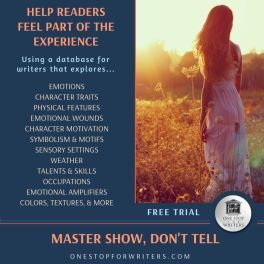 Need More Descriptive Help?
Need More Descriptive Help?While this thesaurus is still being developed, the rest of our descriptive collection (15 unique thesauri and growing) is accessible through the One Stop for Writers THESAURUS database.
If you like, swing by and check out the video walkthrough, and then give our Free Trial a spin.
The post Relationship Thesaurus Entry: Friends appeared first on WRITERS HELPING WRITERS��.
November 3, 2021
How to Showcase Your Character���s Unique Voice
By Resident Writing Coach September Fawkes
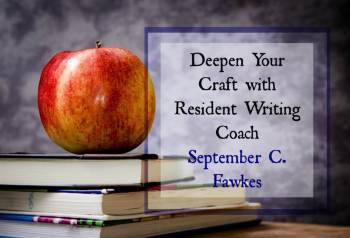
Almost every character should have their own voice���their distinctive way of communicating their worldview.
To illustrate, here are three lines from Harry Potter that reveal Hermione���s, Ron���s, and Harry���s individual voices, respectively.
“Don’t go picking a row with Malfoy, don’t forget, he’s a prefect now, he could make life difficult for you…”
“Can I have a look at Uranus too, Lavender?”
“I don’t go looking for trouble. Trouble usually finds me.”
Because Hermione believes in following rules, she regularly tells Ron and Harry to do likewise, and she���s often very logical about it. Ron, however, tends to be a little coarser than the other two and usually says comical one-liners. Finally, Harry, who is always associated with trouble, often has to defend and explain himself.

When boiled down to its most basic parts, voice is made up of two things:
What the Character Talks (or Thinks) about + How She Says it = Voice
What Your Character Talks AboutWhat someone chooses to talk about (and not talk about) reveals character. It reveals worldview, personality, and priorities. For this reason, it���s often helpful to work from the inside out. Knowing your character���s wants, needs, flaws, fears, and layers, will make crafting their voice easier. With that said, it���s also okay to work from the outside in, especially for side characters. You may craft a pleasing voice that then indicates who the character is.
In The Lord of the Rings, the Hobbits often talk about food. They eat a lot more than other characters so food is a higher priority for them. Because they bring up food a lot, we know it’s what they are thinking about a lot. They don’t casually strike up conversations about advanced battle tactics; they don’t have a war-based background. And any conversation they do have about battle tactics wouldn’t be on the same level as a warrior.
So, their culture, interests, and experiences influence their voices. And because they come from similar places, they talk about similar things. However, each Hobbit still has his own voice (because each Hobbit has his own personality). While Pippin would ask about second breakfast without a second thought, Frodo wouldn���t say anything.
How Your Character TalksJust as the character���s background and personality influence what she talks about, they also influence how she talks. Education, age, and social circles will factor in as well. You will want to consider word choice and speech patterns, and when appropriate, slang and dialect. The character���s dominating emotions can also play into their voice���s tone.

Listen to how Samwise Gamgee talks:
“It’s like the great stories, Mr. Frodo . . . Those were the stories that stayed with you. That meant something, even if you were too small to understand why. But I think I do, Mr. Frodo, I do understand. . . . . Folk in those stories had lots of chances of turning back, only they didn’t. They kept going.���
Notice words like “Mr. Frodo,” and “folk,” help establish Sam’s voice. Pretend, instead, Gandalf said this. The word choices and speech patterns would be different. Instead of “lots of chances” he might say “many opportunities.” He might pause in different places and use different sentence structures. He’s far more educated and experienced than Sam, so he’d say those same thoughts in a different way.
Character Voice in ViewpointWhether in first person or third person, most stories today are written from the point of view of a character (usually the protagonist). This means that character���s voice will influence the narration. However, actually getting that on the page can be a little tricky. Here are three quick tips.
Regularly Write in Deep POV
���Point of view penetration��� refers to how deep the writer gets into the character���s perspective. At the deepest level, the prose takes on the thoughts and attitudes of the character. This is the most effective place to be to get voice on the page (learn more).
Utilize Similes and Metaphors
What your viewpoint character chooses to compare something to will tell us a lot about him. If he compares the color of the sky to the white static on the television, we know he spends more time around or thinking about t.v. than he does nature.
Add Lines that Speak to Worldview
Watch for opportunities to slide in a worldview your character has about something that comes up. Maybe someone your viewpoint character is listening to references the police. Assuming it suits the passage, go ahead and slide in a brief line that clues us into what that character thinks about the police. To them, are they ���pigs���? People to avoid? Or protectors?
Here are some more dos and don���ts of getting your viewpoint character���s voice on the page.
 September C. Fawkes
September C. FawkesResident Writing Coach
September C. Fawkes has worked as an assistant to a��New York Times��bestselling author and writing instructor, and now does freelance editing at FawkesEditing.com. She has published poetry, short fiction, and nonfiction articles, and her award-winning writing tips have appeared in classrooms, conferences, and on Grammar Girl. Grab this AMAZING guide on Crafting Powerful Protagonists at her website and find her on
Twitter �� Facebook �� Instagram �� Tumblr
The post How to Showcase Your Character���s Unique Voice appeared first on WRITERS HELPING WRITERS��.
November 1, 2021
Bookish Gifts for Writers (TIP: This Year, Shop Early)

Every December we put together a gift-giving list for writers for those of you wanting to pick up a little something for critique partners & book buds, or to source for ideas for your own personal Holiday Wish List.
This year, we’re doing this early. Quite early. Why, you ask?
Supply Chain IssuesYou may have heard whispers about paper shortages, printers being backed up, and delivery snags. Well, it’s not an urban legend. Unfortunately the pandemic has caused havoc with the supply chain and word is we all need to brace for some challenges as the holidays ramp up. (If you’d like to read more about this problem, Jane Friedman talks about the supply chain issues that may impact writers this Christmas and there’s another one at Writers in the Storm that has some strategies for authors.)
Hopefully by posting this list of bookish gifts early, you’ll get a jump on ordering print books for the holidays and won’t be affected by any supply chain problems. Let’s dig in!
 Angela & Becca’s Book Recommendations
Angela & Becca’s Book RecommendationsWhen it comes to suggesting books as gifts, the hard part is narrowing it down. But over the years we’ve come across some real gems and want to pass them on. (May contains affiliate links because heck, they help pay the bills.)
Books to Help Writers Grow Their Creative SkillsLuckily there’s a ton of great books out there to help us strengthen our writing skills. Personally I am a fan of ones that tackle a specific topic and explore it in depth. If you’re like me, check these out.
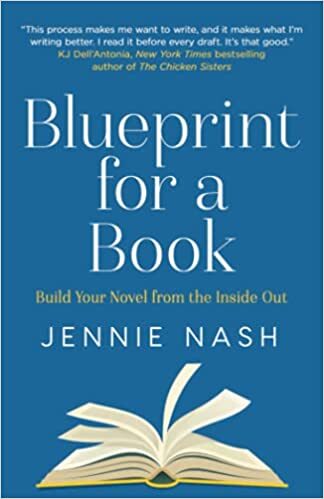
Blueprint for a Book is written by one of the smartest women I know – Jennie Nash. She’s helped thousands of writers craft powerful fiction using her blueprint method. Jennie drills down to what makes a story meaningful and shows writers how to bring key elements together to build a solid foundation. The result? Writers know what to write and why, and can focus on delivering a story hardwired to create an emotional impact.
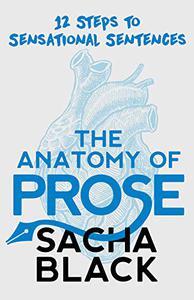
The Anatomy of Prose is a terrific book if you feel your storytelling is solid but maybe your writing isn’t quite as strong as it could be at the sentence level. Add a ton of ideas to your writerly bag of tricks and laugh as you do so as Sacha’s bawdy humor is legendary. And tippity-tip, while you’re picking up this book, snag her Heroes and Villain books, too.
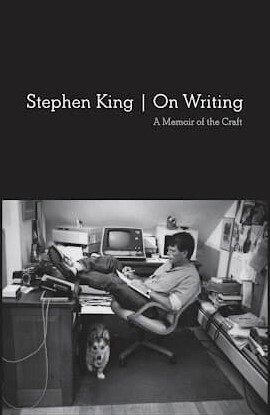
On Writing really doesn’t need a summary from me because, well, it’s Stephen King. That’s really all that needs to be said. I loved this book because it was so interesting to see where his life and process collided, and it’s full of good, writerly advice to carry with you. A staple for all writers.
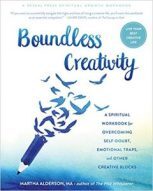
Boundless Creativity is for writers wanting to let go of self-doubt, impostor’s syndrome, and just move forward and create. This book takes a holistic approach to writing, and I don’t think you can read it and not come away unchanged. It will help you get in touch with why you want to create and let go of the mental blocks holding you back.
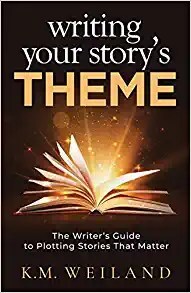
Writing Your Story’s Theme is one on my “buy” list. K.M. Weiland is a master of writing craft and all her books are an auto-buy. Theme is something that can seem like an afterthought for some writers, not something to think too hard about. And as Katie herself states, “Theme is the heart, the meaning, the point. Nothing that important should be overlooked.” My gut says if you want to level up your fiction, you should read this book.

The Conflict Thesaurus: A Writer’s Guide to Obstacles, Adversaries, and Inner Struggles (Vol 1) released in October and the response to it has been huge. Some have said this might be their favorite guide yet! So if you want to write conflict that targets your character’s soft spots, this is the book for you. In addition to master-level advice on leveraging conflict and tension, it showcases well over 100 conflict scenarios and endless possibilities for adapting each.
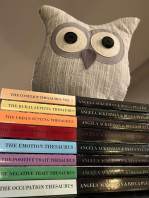
Now might also be a good time to complete your collection if you’re missing any of our show-don’t-tell thesaurus guides. So if your bookshelf needs a rainbow to spruce it up, or you want to be a writer friend’s superhero, you can find all our books here, in print, digital, and PDF.
Books to Help with the Business SideBecca and I have four businesses between us, and most days, I’m not sure how we juggle it all. I’m pretty sure we’d be a twitching mess if we’d not educated ourselves on all-the-things. Here are some particularly amazing reads for you.
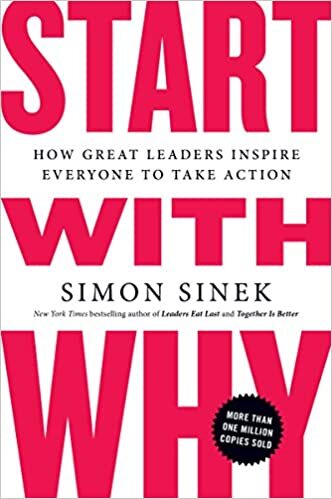
Start with Why is all about the power of authenticity and how to inspire others, and it’s an all-round amazing book. Whether you write fiction or non-fiction, success means building connections with readers and influencers that are meaningful and genuine. People love a good read, but it’s an author’s authenticity and passion for what they do that converts readers into fans.
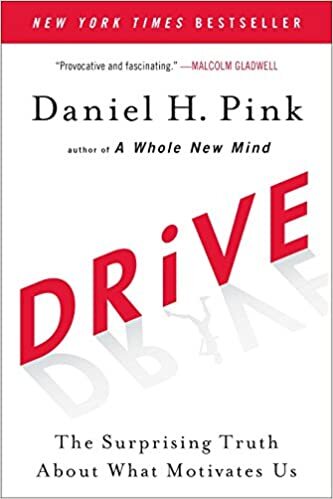
Drive is all about understanding what motivates people. It may be I got a bit more from this book as I work with other people and knowing what makes them happy and productive is key to relating good people, but I think I also understood more about myself and how to be happier, and self-motivated at work.
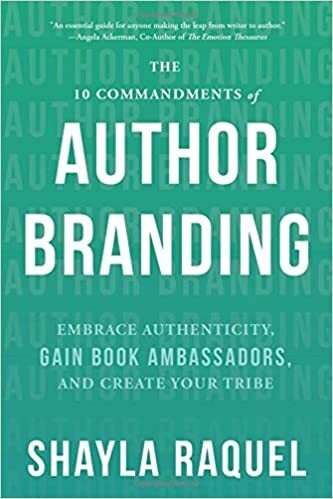
Author Branding is a great how-to book that helps writers define their brand and use social media to showcase it effectively. If the whole idea of putting yourself out there gives you hives, pick up this book. It’s easy to understand and is filled with great advice and helpful tips.
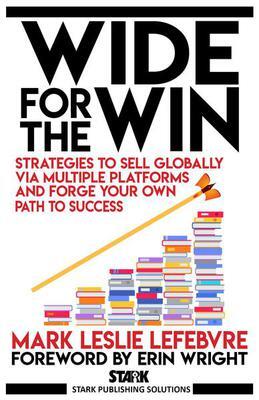
Wide for the Win: I’ll round things off and suggest a read that looks at going WIDE with your books, leveraging all the many platforms to sell your book on, rather than just focusing on Amazon. Mark Leslie Lefebvre has vast experience at all levels of publishing and some of the best insight you’ll find in selling fiction for a living, so this is another good one to add to your bookshelf.
Books to Help Writers Flex Their Marketing Muscles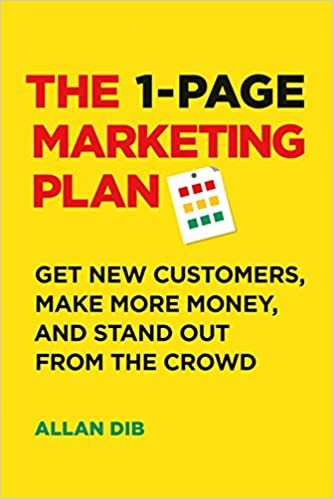
The 1-Page Marketing Plan is aimed at business owners, but here’s a secret…your writing is a business. Sometimes looking outside the publishing industry can lead to some great insight and lessons learned about marketing in general. You might find it to be a helpful exercise to go through this book and create a 1-page marketing plan so you can identify your audience, messaging, and what you’re trying to accomplish.

Copywriting Secrets is a great primer on better understanding how language choices will lead to sales. There wasn’t a lot here I didn’t know (but I read a lot of business books), but it was a good reminder. Just remember to always be authentic and use your best judgment. If your sales copy feels blatant or manipulative, people will notice.
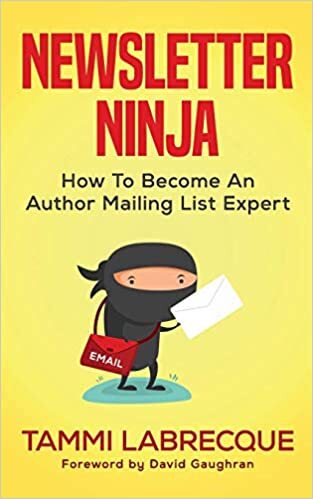
Newsletter Ninja is another one on my “to buy” list, because it’s one I heard referred over and over. And sure, I know some people say email is dead and it’s all about TikTok and Facebook, but you can’t argue with the intimacy of a personal readership, people invested in what you write. I think the key to newsletters is all about engagement and knowing your readers well, so I look forward to upping my game in the newsletter arena.
What Books Are on Your Wish List?Is there a book you’ve heard good things about, and you’re hoping it will end up in your hot little hands this holiday season? Let us know in the comments so we can check it out!
The post Bookish Gifts for Writers (TIP: This Year, Shop Early) appeared first on WRITERS HELPING WRITERS��.
October 30, 2021
5 Ways Trauma Makes Your Character an Unreliable Narrator
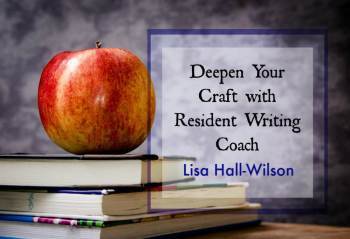
By Lisa Hall-Wilson
Trauma is defined as anything that���s overwhelming or unpleasant that causes long-term mental or emotional problems. Trauma rewires the brain and causes disordered thinking. So, if you���re looking for a way to SHOW a character���s trauma background, to show the WHY behind poor choices, irrational behaviour, etc., use internal dialogue that reflects this disordered thinking. This is the key to creating emotional connections for readers.
Below are some common ways that trauma causes problematic thinking patterns. Showing this flawed thinking, the emotional reactions to it, and the behaviours it causes will reveal to readers what���s important to your character, what inner obstacles they face, and often a whole lot about their priorities, values, and self-worth.
1. Fear And Safety Are Constantly Considered
For a character who���s endured trauma and continues to struggle with the aftermath of that event, the brain becomes preoccupied with staying safe and is very sensitive to any sense of fear. Imagine placing a smoke alarm directly over your toaster. You���d get a lot of false alarms, but that wouldn���t mean the alarm or the toaster were malfunctioning.
A brain preoccupied with staying safe will see danger around every corner ��� literally, whether that���s the reality or not. And when danger lurks around every corner, the energy required to see it coming, be ready at a moment to react to it, is exhausting. Every decision is filtered through this risk assessment.
Does your character need to sit near a door? Do they need to know a LOT of details about a party, event, or meeting before they can agree to go? Will they avoid anything that might remind them of the past trauma? Maybe they take ten flights of stairs everyday because the elevator feels unsafe (since there���s no quick escape from it). The illusion of control is very comforting. And of course, this can stray into self-sabotage, right? Because when an office shuffle moves them out of a workspace with a door and into a cubicle, they end up quitting.
2. Truth Isn���t Based on Fact or RealityDecisions are made based on a blending of past experience, this preoccupation with fear and safety, anxiety of what could happen, and/or on personal truth (see below for inner dialogue problems). Those with PTSD assess everything based on what DID happen and strive to make sure it never happens again. Those with generalized anxiety see the world through the lens of what COULD happen. Often though, these assessments always skew to the negative. They don���t often see the hope or potential in a new situation or positive change, only what could be harmful.
One of my favourite examples of this is Karl Urban���s portrayal of ���Bones��� in the latest Star Trek movies.
Kirk : I think these things are pretty safe.
‘Bones’ : Don’t pander to me, kid. One tiny crack in the hull and our blood boils in thirteen seconds. Solar flare might crop up, cook us in our seats. And wait’ll you’re sitting pretty with a case of Andorian shingles, see if you’re still so relaxed when your eyeballs are bleeding. Space is disease and danger wrapped in darkness and silence.
Kirk : Well, I hate to break this to you, but Starfleet operates in space.
‘Bones’ : Yeah. Well, I got nowhere else to go. The ex-wife took the whole damn planet in the divorce. All I got left is my bones.
These sentiments don���t have to be spoken aloud; sometimes, the negative can be shown through internal dialogue. This edge-of-your-seat-expectation that the sky is falling, or that sense of waiting for the other shoe to drop ��� imagine what that would feel like. How exhausting that would be. The juxtaposition between what the character wants to do to feel safe and the decision or action they actually take can be very compelling.
This goes past just being grumpy or irritable. The key is showing the inner tension and the real impending sense of constant doom that pervades the trauma character���s thinking and emotions. For example, many who struggle with PTSD believe they���ll die young, though they won���t have a concrete reason for that belief. So maybe they want to do everything right now. Maybe they take risks that are truly unsafe.
3. Most Of Life Becomes Black or WhiteWhen a character with a trauma background is struggling, their disordered thinking often becomes very black and white. There���s little nuance or room for subtlety in the effort to stay safe and not feel afraid.
I can���t trust anyone.
I can���t trust any man.
Everyone hates me.
Everyone is talking about me behind my back.
Show the reader this isn���t actually true. For instance, you can have other characters counter this with behaviour or dialogue. By showing that the character���s thinking is unreliable, the reader gets a sense that something���s out of balance. The reader can see why the character makes the decisions they make while also seeing the flaws in that thinking or rationale. The character���s decisions only need to be rational TO THEM in that moment.
4. Inner Monologue Delivers Harmful Messages
For the character with a trauma backstory who���s unconsciously (or consciously) preoccupied with safety and predisposed to fear, often the messages they tell themselves influence their reactions. The character may in fact seek out situations where those messages are confirmed (confirmation bias or a self-fulfilling prophecy). How you craft these messages can show the reader a whole lot about how the character sees themselves and their place and value in their world.
The messages are not based on fact or reality but on a personal truth/belief that���s been reinforced over time. In real life, many people aren���t aware of those harmful messages, but in fiction, we need to show this clearly so the WHY of the character���s decisions make sense. Some common harmful messages those struggling with past trauma repeat to themselves include:
I���m not lovable.
I���m stupid.
It was my fault this happened.
I don���t matter.
There must be something wrong with me.
Sprinkling in thoughts like these shows the reader the character���s foundational understanding of their worth. If this is done well, it adds buckets of tension. These small bits of inner reflection answer the WHY for readers without needing to tell them the character struggles with depression or PTSD or intrusive nightmares, etc. They can also show that the character isn���t consciously looking to harm themselves with risky or dysfunctional behaviors, that they may be seeking out those situations because they actually believe they deserve the consequences.
5. The Status Quo Is A Survival MechanismWhen the character knows what���s coming���even if it���s harmful or painful���that���s better than facing what���s unknown. They know how to handle/survive the known. That illusion of control is pervasive. They can���t imagine a different future, and often don���t feel they deserve anything better.
Stepping out into something new, changing old patterns, trusting someone new ��� these become heroic efforts for those struggling with past trauma. The character���s internal reaction, emotions, and thinking should reflect the monumental effort and courage this kind of change requires.
Trauma and Disordered Thinking: Showing vs. TellingTo pull everything together, here’s what trauma looks like when it’s told vs. shown. You can decide which is more powerful, more compelling.
Telling: Stan woke up from the nightmare, sweat pouring off his face. He took a deep breath. It was just the PTSD again giving him bad dreams.
Showing: Stan bolted upright, chest heaving. He searched the dark corners of the bedroom, his heart pounding against his rib cage like a man buried alive. Sweat covered his chest and back, and he shivered under the brush of cool air from the ceiling fan. He���s at home. He kicks off the covers and sets his bare feet on the cold floor. Not in the desert. Not at the FOP. His toes curl under from the chill. There���s no sniper. His heart slows to a dull bone-jarring beat. He���s safe.
But Billy is still dead. Tears fill his eyes and the moan that erupts from his gut stays trapped in his throat, constricting his airway. He stares at his hands, willing them to stop trembling. What���s the matter with him? He makes fists and pounds the mattress. This is what he got for coming home in one piece. He glances at the clock. Three hours til dawn. He reaches for the bottle next to the bed.
Trauma and anxiety are like the schoolyard bully who seems too big to fight. But the underdog character who takes this on, who pulls the curtain on the wizard, so to speak, is very compelling. Everyone has faced a similar situation in the form of a childhood bully, an overbearing boss, whatever. Most people know what that feels like and what it would take to stand up for themselves and enact change.
Do you struggle to show and not tell internal conflict or tension in your fiction? Have you included any trauma backstories for your characters?
 Lisa Hall-Wilson
Lisa Hall-WilsonResident Writing Coach
If Lisa had a super-power it would be breaking down complicated concepts into digestible practical steps. Lisa loves helping writers ���go deeper��� and create emotional connections with readers using deep point of view! Hang out with Lisa on Facebook at Confident Writers where she talks deep point of view.
Twitter �� Facebook �� Website �� Pinterest
The post 5 Ways Trauma Makes Your Character an Unreliable Narrator appeared first on WRITERS HELPING WRITERS��.
October 28, 2021
How to Tell If You’ve Found the Best Book Marketing Niche
By Colleen M. Story
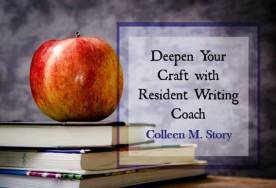
How can you tell if your book marketing niche is the right one?
There are three signs to look for.
But first, let���s review what we���re talking about.
What is a Book Marketing Niche?Your books appeal to a certain type of reader. As the author, you have to not only determine who those readers are but then fashion your author platform to help attract and retain those readers.
Finding your ���niche������your unique place on the market���helps you do that.

But that���s easier said than done.
Let���s take Ruby, for example. She writes paranormal romance books, so she needs to appeal to readers who are interested in paranormal circumstances and characters.
She could simply blog about paranormal romance. But she���s up against a lot of competition in that category, so she���s likely to disappear in the vast wilderness that is the Internet.
She needs to find a way to stand out.
How Authors Can Find Their Unique NicheAfter I got my first novel publishing contract, I struggled to find a marketing niche.
When I got my second publishing contract, I knew I had to step it up. I did a lot of thinking and finally decided to try combining my professional skills as a health writer with my passion for creativity.
It was that decision that helped me create Writing and Wellness, my motivational website and blog. Once I did that, my career took off simply because I was talking about something (wellness for writers) that no one else was.
Today, I recommend that you combine your personal strengths (are you funny? romantic? organized?) with your writing genre to come up with a unique niche that sets you apart from others.
Examples of How to Create Your Perfect Book Marketing NicheLet���s go back to Ruby. She sits down and takes inventory of her skills. Maybe she asks her friends and family what they find exceptional about her.
She zeroes in on two special skills/passions:
She���s a fierce researcher. She knows and loves the details.She���s got a wicked sense of humor her friends love.Considering these strengths and her genre, Ruby tries a few combinations in a potential author site tagline:
Paranormal romance for smart readers who know their spirits.Ghost stories that answer the questions you were too terrified to ask.Romantic ghost stories that will tickle your funny bone.She continues playing around with the ideas, and finally lands on:

Ruby Lovett���s Romance: Where paranormal love is fun!
Now I���m just playing around here���I���m sure you could come up with something better if you wanted to. But you get the point.
Now when readers visit Ruby���s site, they���re going to get a good idea of what she writes about. If that topic appeals to them, they���ll stick around to read more.
Already, Ruby is on her way to establishing a powerful niche in her genre.
How to Tell if You Have the Right Book Marketing NicheNow that Ruby has a niche���as communicated in her tagline���she needs to test it out to see if it���s going to help her attract readers, build her subscriber list, and eventually sell more books.
Ruby starts blogging about fun paranormal love. Maybe she publishes a blog post on where ghosts like to go for dates. Or she creates a video about the three most important questions ghosts should ask their partners. She may interview a relationship expert on her podcast and ask about the unique challenges ghost couples face.
As she works on these things, she can ask herself the following questions to see if this niche is working for her:
1. Are we bored yet?Authors who find the right niche never get bored with what they���re talking about.
If this is the right niche for Ruby, she���ll never tire of exploring this whole idea of how paranormal love can be fun. She will have no trouble coming up with new ideas for posts or podcasts, and she���ll find that the more she does it, the more she loves it.
If, however, this is the wrong niche for Ruby, she���ll get bored with it rather quickly���say, in about 3-6 months. She���ll run out of ideas and will start to stress about what to blog about. Her posts will get hum-drum and dry, and the fun will drain out of her work.
Question for you: Are you bored with your book marketing niche?
2. Are the readers coming?The second sign that Ruby has found the right book marketing niche is that her readership is growing.

She���s getting more visits to her website, more ���likes��� and shares on her social media posts, and ultimately, more newsletter subscribers. People are commenting on her content and sharing it with their friends. She���s building a reputation for herself as the queen of fun paranormal love.
If, on the other hand, Ruby has been working this niche for 3-6 months and nothing is changing���no one is reading the blogs, her number of subscribers has stayed pretty static, and her social media posts are going unnoticed���it may be time for a change.
Question for you: Is your book marketing niche attracting readers?
3. Are my opportunities expanding or shrinking?Once you find your best marketing niche, your opportunities will start to expand.
As Ruby becomes the ���expert��� in fun paranormal love, her reputation for hosting hilarious podcasts about ghost dating challenges spreads.
Soon the coordinator of a writing conference emails and asks if Ruby might be willing to do a workshop on why authors should consider starting a podcast. Or a fellow writer contacts her to find out if she���d like to collaborate on a paranormal dating cookbook.
Ruby may want to self-publish a coffee table book filled with photographs of spooky haunted dating spots or use her research skills to investigate stories of supernatural lover’s revenge.
If your opportunities are, on the contrary, shrinking���no one���s calling, no one���s stopping by, and no grand ideas for future projects are popping���it���s time to re-evaluate your niche.
Be Flexible When Figuring Out Your Book Marketing NicheKeep in mind too that once you���ve established yourself in one niche, you can easily do it again if you want to branch out into another genre. Several authors have more than one niche to help them market different types of books and related products.
The process is the same: Identify who your reader is, combine your genre with your skills/passions, and create something unique that will allow your creative nature to soar.
Note: For more help on finding your unique book marketing niche, see Colleen���s award-winning book, Writer Get Noticed: A Strengths-Based Approach to Creating a Standout Author Platform (affiliate link). Get your free chapter here!
 Colleen M. Story
Colleen M. StoryResident Writing Coach
Colleen M. Story inspires writers to overcome modern-day challenges and find creative fulfillment. Your Writing Matters helps writers overcome self-doubt and determine where writing fits in their lives. Writer Get Noticed! was the gold-medal winner in the Reader���s Favorite Book Awards. Overwhelmed Writer Rescue was named Book by Book Publicity���s Best Writing/Publishing Book in 2018, and her novel, Loreena���s Gift, was a Foreword Reviews��� INDIES Book of the Year Awards winner. Find out more at these sites:
Writing and Wellness | Life and Everything After | Teachable | Author Website | Twitter
The post How to Tell If You’ve Found the Best Book Marketing Niche appeared first on WRITERS HELPING WRITERS��.
October 26, 2021
What Are Pinch Points and Where Do They Go?
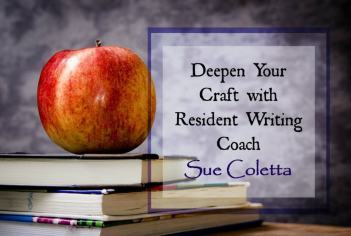
By Sue Coletta
Once I learned structure and could visualize the pattern beneath my favorite novels, movies, and streaming series, I felt like I���d been handed the keys to a magical kingdom. Employing structure elevated my writing to the next level. This knowledge helped me score my first publishing contract. Powerful stuff, structure.
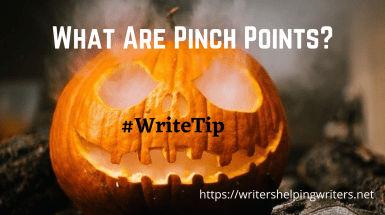
Some say, planning a novel in advance destroys creativity. I believe the opposite is true. Regardless, it���s important to hit certain milestones for the novel to work. Two of those milestones are called Pinch Points.
New writers often concentrate on the Hook, Midpoint, and the big twist at the end. But without well-placed Pinch Points, the story will lose its sense of rising action, conflict, and tension. The quest cannot exist without an opponent, and the Pinch Points show the reader what that opposition is all about.
Pinch Points show how high the stakes are. They also set up the emotional change within the hero as they react to the new situation.
The First Pinch PointThe First Pinch Point comes midway between the First Plot Point and the Midpoint. Since the First Plot Point comes in at 20%-25% into the book and the Midpoint arrives at 50%, then the First Pinch Point would be at the 3/8th mark or about 37.5%.
With the First Pinch Point, readers need to see the antagonist and not merely hear it referenced or discussed. They need to experience it, either through the hero���s eyes or through the antagonist. In thrillers, the scene could involve a murderer stalking his next victim. Or a kidnapper playing recorded screams over the phone for the hero. In a romance novel, the First Pinch Point could be the hero���s husband being seduced by another woman (acting as the antagonist).
The simpler and more direct the pinch point the better. The important thing to remember is that the reader must feel it. Even if we choose to use a cutaway scene to show the antagonist, we���ve fulfilled the need of the First Pinch Point.
Anyone who���s ever read an Alex Cross thriller has seen these many times. The Pinch Points stick right out because Patterson uses short chapters that show what the antagonist is doing ��� planning, scheming, killing. Make no mistake, he knows exactly where to place those Pinch Points to keep the reader flipping pages.
That doesn���t mean we need to use a cutaway scene. Think about most detective fiction. The story begins with the detective being assigned a new case or called to a crime scene. The detective (and team) spends several scenes working the case ��� collecting evidence, searching for clues, canvassing the neighborhood ��� but getting nowhere. And then, another body is discovered. The arrival of victim number two reminds the reader of the evil lurking nearby ��� if the hero doesn’t catch the killer, more will die ��� which fulfills the duty of the First Pinch Point.
In Silence of the Lambs the First Pinch Point arrives when Hannibal Lecter gives Clarice the location of a storage facility, where she finds a jarred head of an early victim of Buffalo Bill.
The Second Pinch PointThe Second Pinch Point should land between the Midpoint (50%) and the Second Plot Point (75%) at around the 5/8th mark or 62.5%. This time, we need an entire scene devoted to the Second Pinch Point, whereas with the First Pinch Point, we don���t.

A Pinch Point is a demonstration of the nature, power, and essence of the antagonist force. And now, it���s more frightening than ever because he���s upped his game, just as the hero changed at the Midpoint from a wanderer (who is trying and failing) to a real hero attacking the problem head on. The Second Pinch Point is the time to show this evil in its purest form.
Suppose the hero meets a victim���s family member. This character shares details of how she lost her sister, how evil the antagonist really is, and warns the hero about what���s at stake should they fail.
If we think back to Silence of the Lambs again, the Second Pinch Point arrives when Hannibal shows Clarice the map of Buffalo Bill���s murders, which ultimately helps her break the case and find the killer.
But what if the antagonist force is within your hero? Then the Second Pinch Point could be a discussion between two characters that reminds the reader what the protagonist is up against.
None of this means we can���t show the antagonist earlier in the story. We can add as many pinch points as we like, but we must have at least two, perfectly placed.
Pantsers, Don���t Panic!Write by the seat of your pants. Then, when you finish the first draft, add your two Pinch Points. We place them at 37.5% and 62.5% for a reason, but don���t drive yourself crazy trying to land on the exact page.
I���ll leave you with a quote from Story Engineering to help you remember the proper placement of each Pinch Point.
���The First Plot Point, Midpoint, and Second Plot Point are your big meals. Don���t skip them if your goal is to add dramatic tension and jack the pace to your story. The Pinch Points are like nutritious snacks between those meals ��� mid-morning and mid-afternoon. They���re good things. They give you energy, they nurture you. You wouldn���t eat them too soon after a big meal, nor would you eat them right before a major meal. No, they���re right smack in the middle of the gaps between those meals.
As for any other snacks (moments in which your bad guy does his thing), well, remember that in this analogy you���re trying to gain weight��� so go for it. The more calories you stuff down the reader���s throat the better.��� Larry Brooks, Story Engineering
 Sue Coletta
Sue ColettaResident Writing Coach
Sue Coletta is an award-winning crime writer. Feedspot and Expertido.org named her Murder Blog as “Best 100 Crime Blogs on the Net” (2018-2021). She also blogs at the popular Kill Zone, writes two psychological thriller series (Tirgearr Publishing), and true crime/narrative nonfiction (Rowman & Littlefield Group, Inc.).
Sue also appeared on the Emmy award-winning true crime series, Storm of Suspicion and will be teaching an advanced education course on serial killers for Foothills Regional (CT).��
Website | Facebook | Twitter | Amazon | Goodreads | BookBub | Instagram | YouTube
The post What Are Pinch Points and Where Do They Go? appeared first on WRITERS HELPING WRITERS��.
October 23, 2021
Relationship Thesaurus Entry: Service Provider and Customer
Successful stories are driven by authentic and interesting characters, so it���s important to craft them carefully. But characters don���t usually exist in a vacuum; throughout the course of your story, they���ll live, work, play, and fight with other cast members. Some of those relationships are positive and supportive, pushing the protagonist to positive growth and helping them achieve their goals. Other relationships do exactly the opposite, derailing your character���s confidence and self-worth or they cause friction and conflict that leads to fallout and disruption. Many relationships hover somewhere in the middle. A balanced story will require a mix of these dynamics.
The purpose of this thesaurus is to encourage you to explore the kinds of relationships that might be good for your story and figure out what each might look like. Think about what a character needs (good and bad), and build a network of connections for him or her that will challenge them, showcase their innermost qualities, and bind readers to their relationship trials and triumphs.
Servicer Provider and Customer
Description:
A service provider is hired by a customer or client who needs their expertise. Examples of service providers run the gamut; these individual might be plumbers, electricians, personal drivers, babysitters, hair stylists, physical therapists, accountants, realtors, financial advisors, etc.
If the two parties only interact for a short period of time (as in the case of a one-time service call), this relationship will be a superficial one. But some situations may require a long-term partnership, such as a customer employing an on-call handyman or hiring a repeat freelancer. The situations will result in deeper relationships.
Relationship Dynamics
Below are a wide range of dynamics that may accompany this relationship. Use the ideas that suit your story and work best for your characters to bring about and/or resolve the necessary conflict.
A relationship based on trust, mutual respect, and boundaries
A purely professional relationship where both parties reach a satisfied outcome
A service provider being hired by a customer who is a family member of friend
A customer who wants to learn about the services they’re receiving paired with a provider who is willing to share their knowledge
Two chatty parties who get to know each other during a service call
A relationship in which one person is condescending or dismissive
One party being uncommunicative or unavailable
A relationship based on unrealistic expectations (regarding cost, the scope of the problem being solved, the time involved to complete the project, etc.)
One party trying to cheat or take advantage of the other
An untrusting customer who expects to be cheated by the provider
Distrust based on biases or stereotypes
Challenges That Could Threaten The Status Quo
The customer seeking a second opinion from another service provider
The service provider going over schedule or budget
The customer posting a bad review��of the service provider
Trouble resulting from the service provider having poor social or professional skills
The customer or service provider being late or unavailable��
The service provider losing their professional credentials
The customer changing their mind about an aspect of a project after work has begun
The service provider delivering a poor outcome that fails to meet the customer���s expectations
The service provider being injured on the job
The customer running out of money��
The service provider disappearing in the middle of a project
The customer being injured or facing damages as a result of the service received
The service provider cutting corners by using cheap or unreliable materials
The customer trying to negotiate down a service provider���s fees
Both parties having differing visions for the project
One party facing a sudden life change that threatens to derail the project (finance, illness, relationships, etc.)
The service provider losing their job
One party learning something unsettling about the other in the middle of a project
Learning that the service provider has misrepresented their abilities or experience
Conflicting Desires that Can Impair the Relationship
One party wanting to control the other
The customer wanting to stick to a budget that the service provider cannot work with
One party wanting a project timeline that the other can’t agree to
One party wanting a relationship that is more than strictly professional
One party wanting to work together in the future while the other does not
The service provider wanting more autonomy and creative license than the customer is willing to give
One party wanting a level of communication that differs from the other party
A customer with experience in the service provider’s field wanting more say in the project than the provider believes they should have
Clashing Personality Trait Combinations
Independent and Needy, Controlling and Weak-Willed, Generous and Greedy, Persuasive and Gullible, Efficient and Scatterbrained, Judgmental and Oversensitive
Negative Outcomes of Friction
The parties deciding to maintain only a professional relationship, ending a budding friendship
The provider being fired from their company or the customer’s project
Fights and arguments over a proposal
Either party feeling undervalued or unheard
Either party bad-mouthing the other party
The customer refusing to pay for services
The service provider refusing to finish the job
A resulting lawsuit
The customer’s problem going unfixed longer than is convenient
Fictional��Scenarios That Could Turn These Characters into Allies
A project having tremendous success (winning an award, being featured in a magazine, etc.)
One party experiencing a personal difficulty that the other has experienced
A service provider encouraging a customer to make a bold decision
The parties realizing they have a friend or influencer in common
A similar project being worked on by a rival, turning the parties into a team to produce a better outcome
The service provider working out an arrangement that makes the customer’s vision possible
The customer having specific expertise that can used to help the provider personally
Ways This Relationship May Lead to Positive Change
The customer and service provider connecting on a personal level
Both parties learning from one another and growing in positive ways
Each person being validated and growing in confidence from the experience
Embarking on a long-term professional relationship that benefits both parties
Learning to collaborate and compromise
A customer learning to accept help
Learning to respect someone whose career requires a particular expertise
Someone in the customer’s household being inspired to pursue a career in the provider’s field
Themes and Symbols��That Can Be Explored through This Relationship
A Quest for Knowledge, Beginnings, Deception, Depression, Disorder, Friendship, Greed, Inflexibility, Knowledge, Passage of Time, Perseverance, Pride, Stagnation, Teamwork, Transformation, Unity
The post Relationship Thesaurus Entry: Service Provider and Customer appeared first on WRITERS HELPING WRITERS��.
Writers Helping Writers
- Angela Ackerman's profile
- 1014 followers



